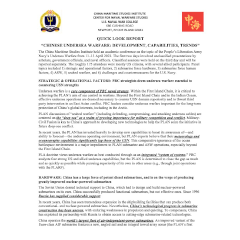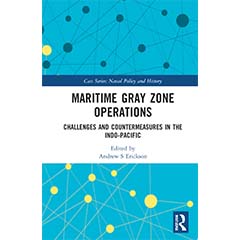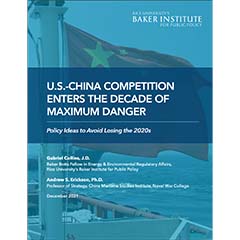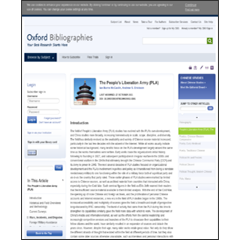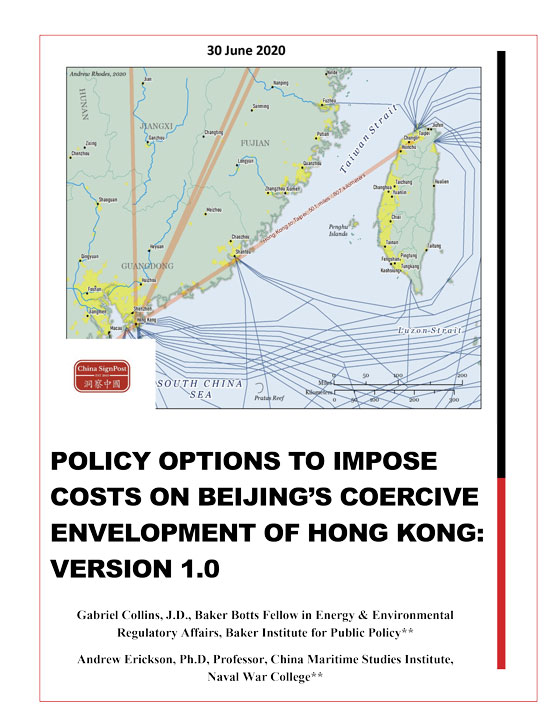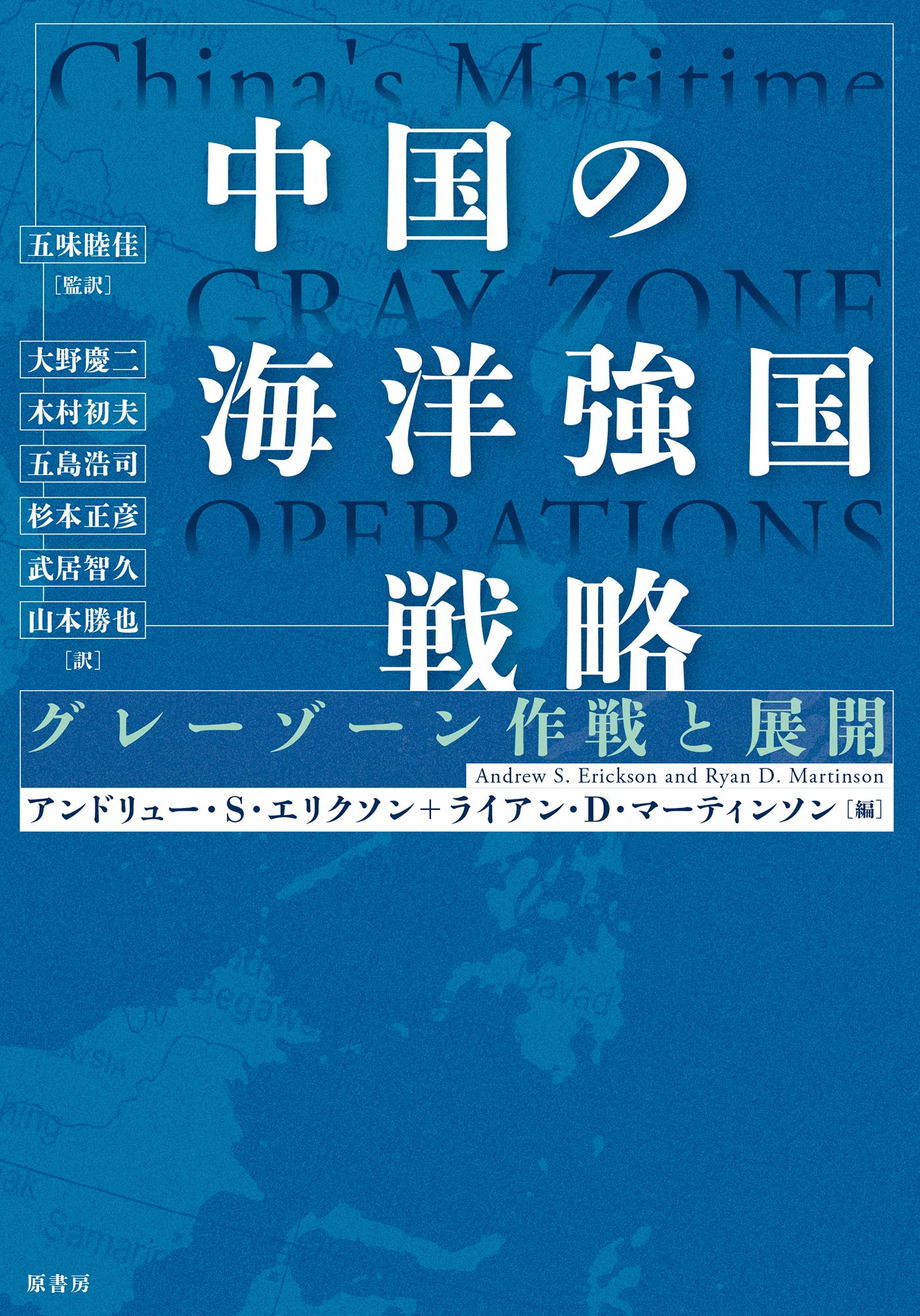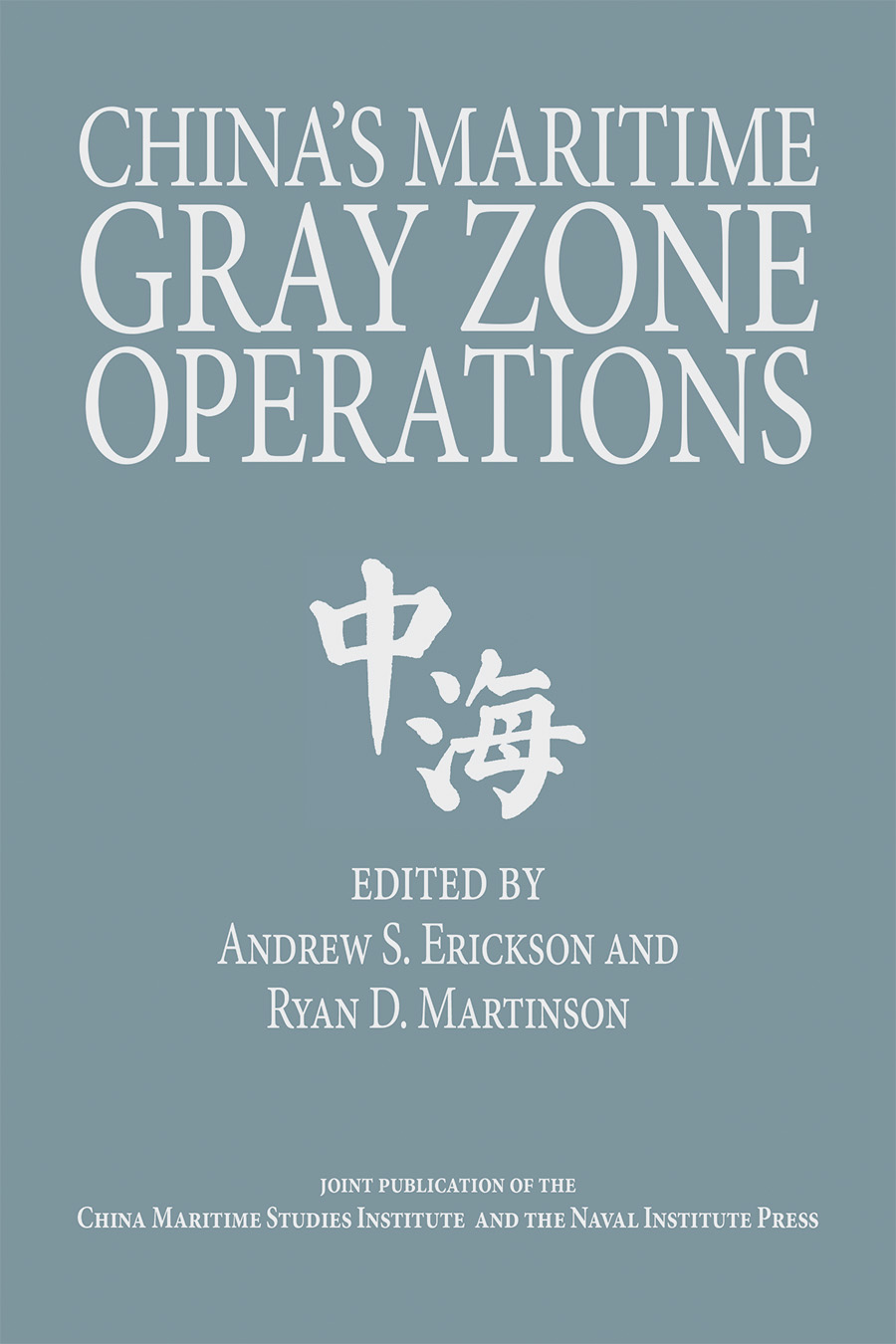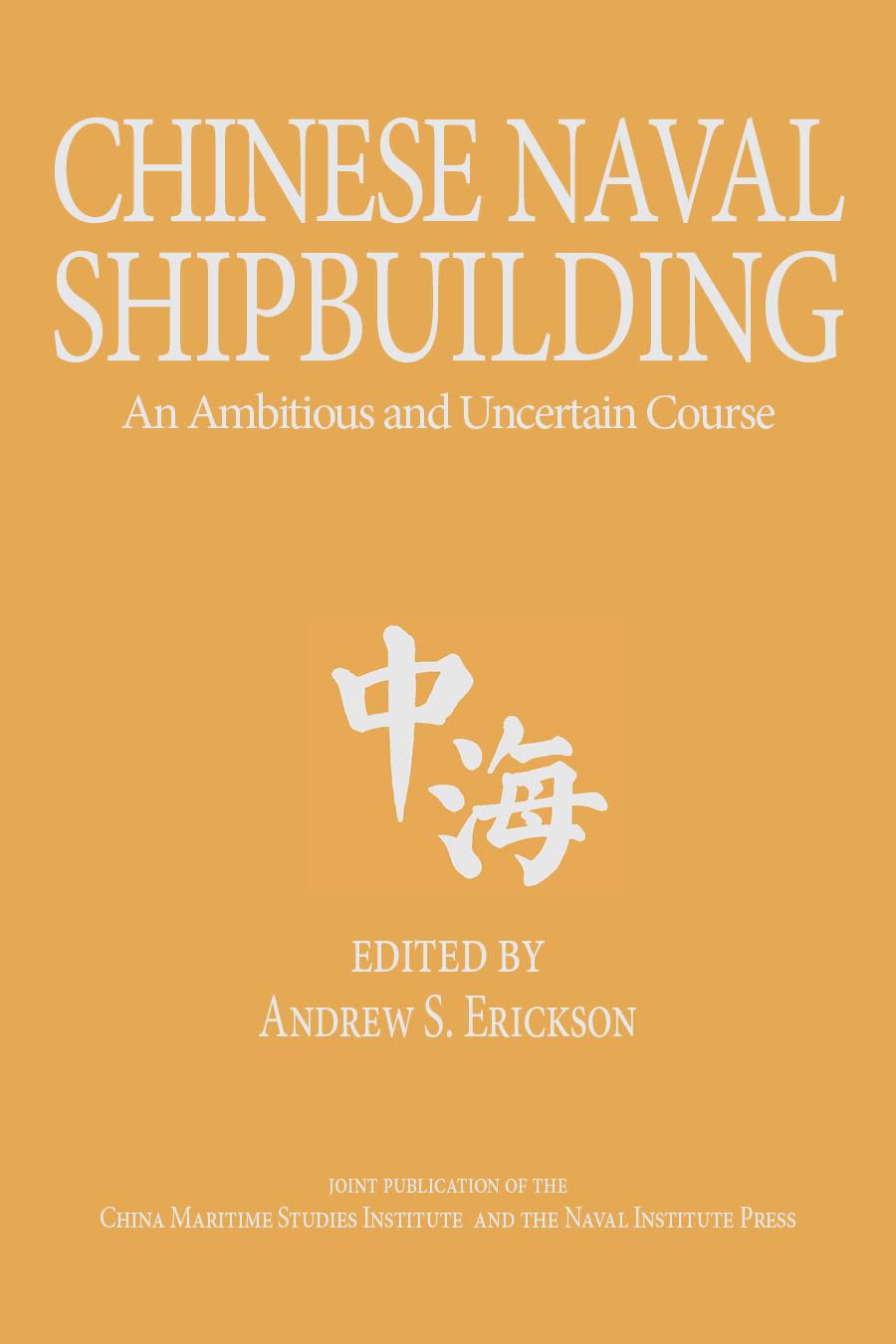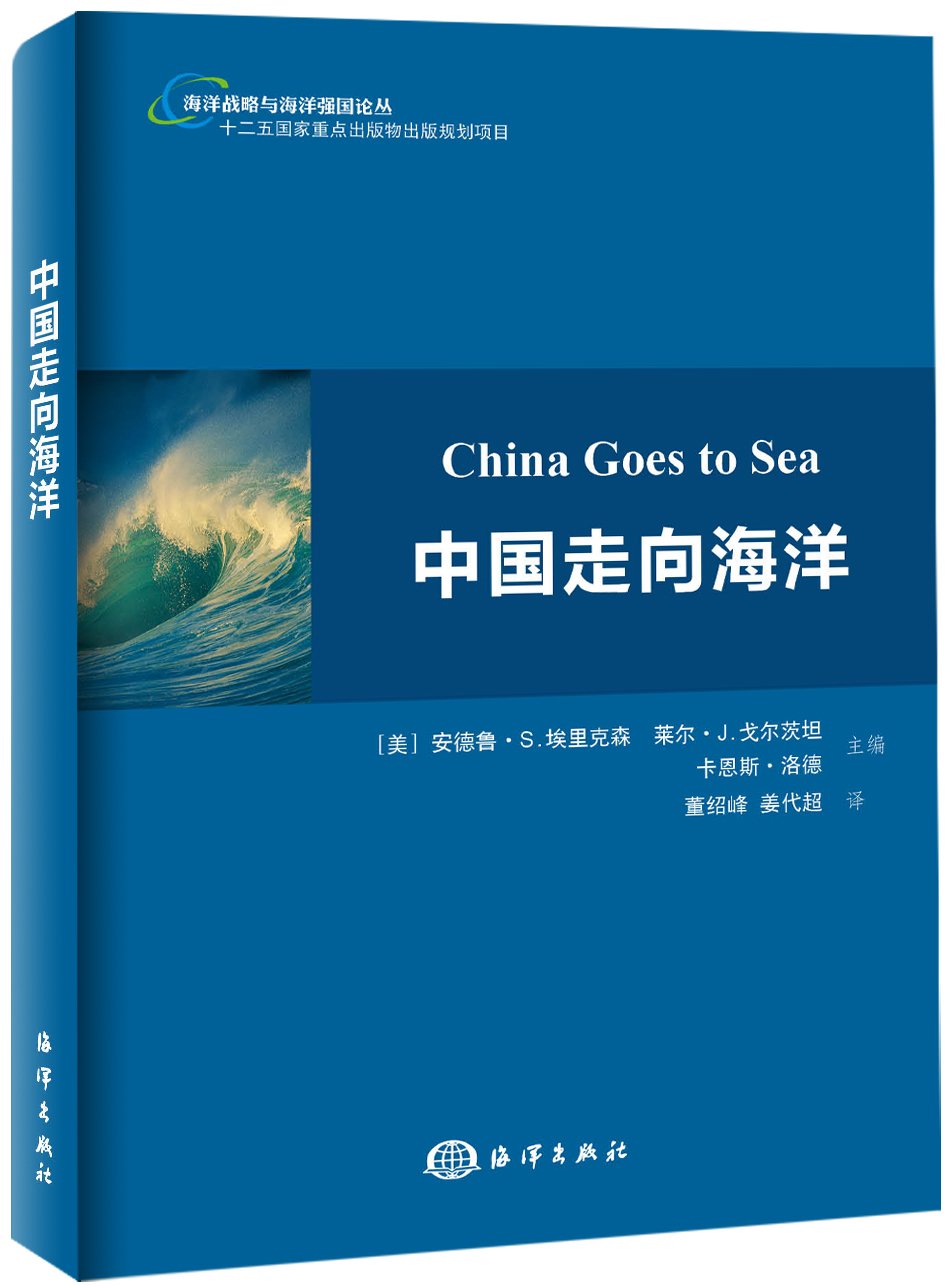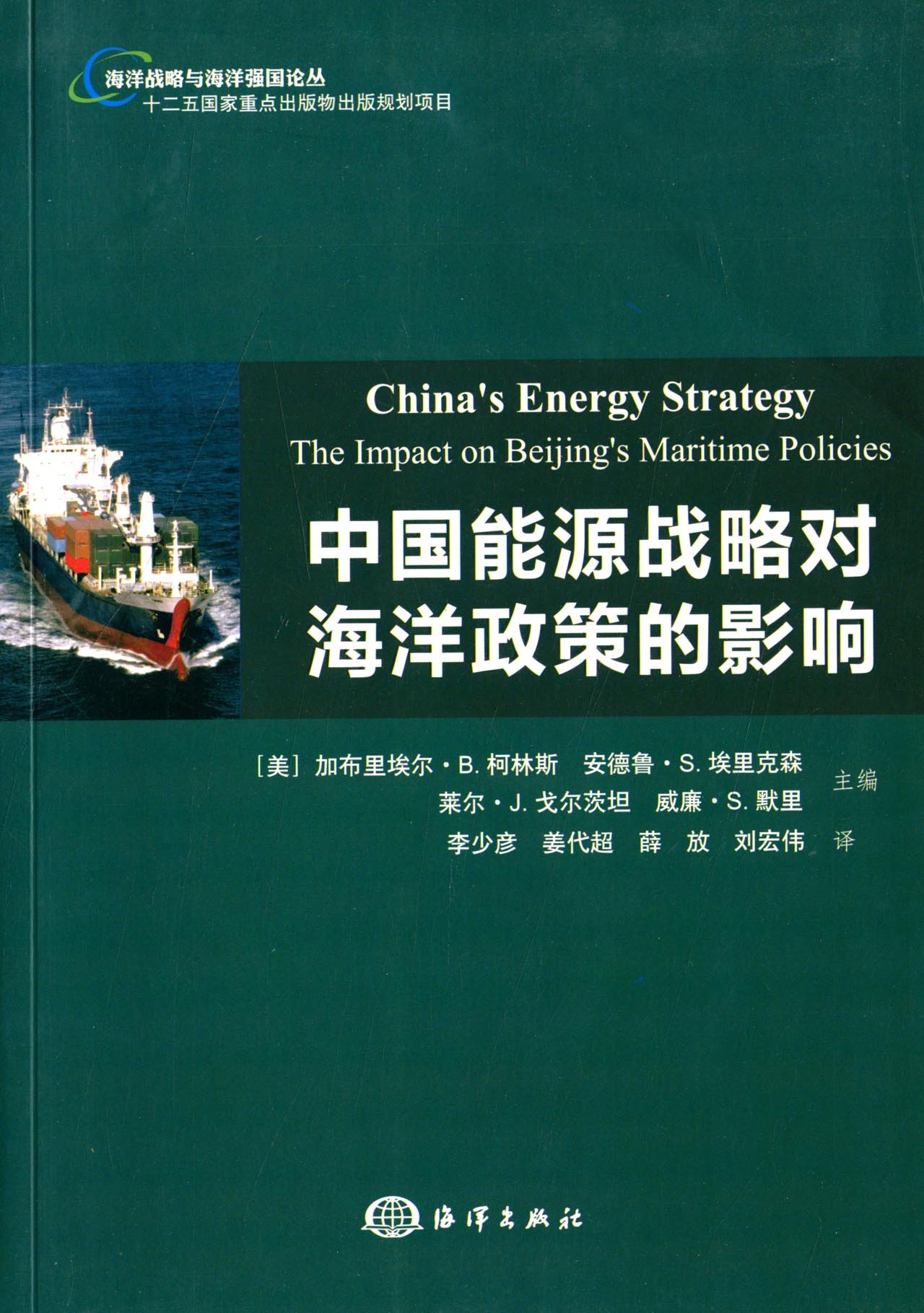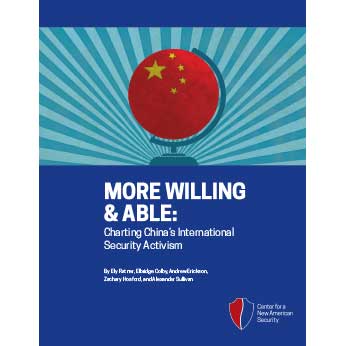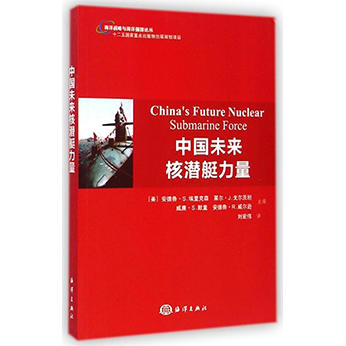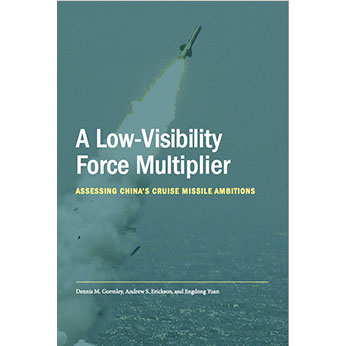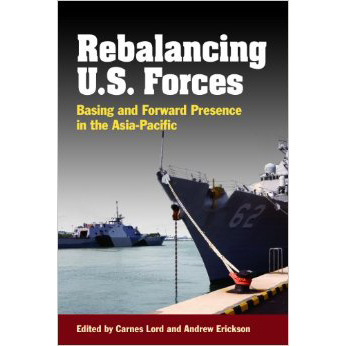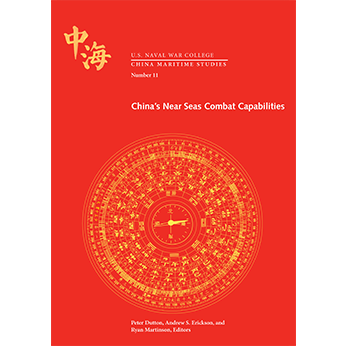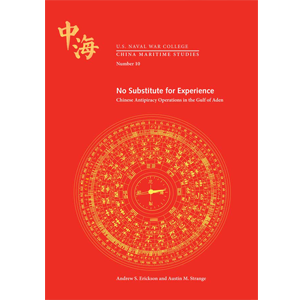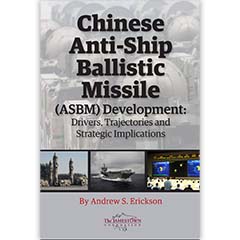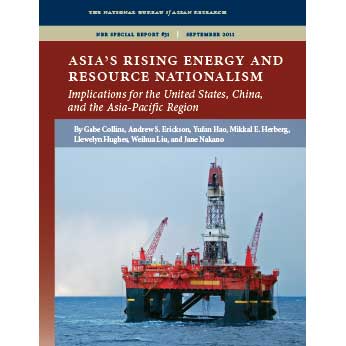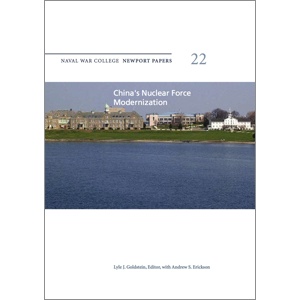From Management Crisis to Crisis Management? Japan’s Post-2012 Institutional Reforms and Sino-Japanese Crisis (In)Stability
My latest peer-reviewed article has just been published in the newest print issue of Journal of Strategic Studies. I coauthored it with Professor Adam P. Liff of Indiana University. We address the important but under-studied subjects of Japan’s National Security Council (NSC), its post-2012 institutional reforms, and Sino-Japanese crisis (in)stability. In doing so, we analyze the likely implications of recent organizational restructuring and enhancement, especially the new NSC, for Japan’s crisis management capabilities—particularly vis-à-vis tensions with China over competing sovereignty claims in the East China Sea.
Adam P. Liff and Andrew S. Erickson, “From Management Crisis to Crisis Management? Japan’s Post-2012 Institutional Reforms and Sino-Japanese Crisis (In)Stability,” Journal of Strategic Studies 40.5 (2017): 604–38.
Abstract: Since 2012, China’s assertion of its sovereignty claim to the contested Senkaku/Diaoyu Islands has significantly raised the risk of a potentially escalatory political-military crisis with Japan. As circumstances worsen, Japanese Prime Minister Shinzo Abe has championed major institutional reforms aimed at centralizing Japanese security policy decision-making and vastly improving crisis management. This article assesses these reforms’ significance for ameliorating Japan’s long-standing internal crisis management weaknesses, and enhancing its ability to communicate with Beijing promptly under challenging conditions. While significant issues remain, recent developments – especially the establishment of Japan’s first-ever National Security Council – demonstrate significant progress. Bilaterally, however, important firebreaks remain conspicuously absent.
Keywords: Japan, crisis management, security, National Security Council, China
Selected Text:
Since September 2012, China’s employment of military and paramilitary forces to challenge Japan’s decades-old administrative control of the Senkaku (Chinese: Diaoyu) Islands has introduced significant uncertainty and risk into the most volatile flashpoint between the world’s second and third largest economies. Under this ‘new normal,’ China’s civil maritime and air forces, backed by navy and air force power, provocatively assert Beijing’s sovereignty claim. The stakes are high: conflict–even unintended–between China and Japan (with its US ally) over the uninhabited islands could be catastrophic. It would involve the world’s three largest economies and be disastrous for regional and global stability, as well as the world economy.
Despite these manifest costs, and the fact that neither Beijing nor Tokyo wants conflict, the post-2012 operational status quo has significantly increased the possibility of even an unintended miscalculation or incident. Especially in a potentially volatile domestic political context, a subsequent political-military crisis could escalate if not managed rapidly and effectively. History provides particularly sobering lessons regarding the escalation risks in territorial disputes, however ill-advised on material grounds. A vast political science literature demonstrates that disputes over territory are the primary cause of most modern wars.1 During remarks on bilateral tensions at the 2014 World Economic Forum, the Japanese prime minister’s (PM) ominous reference to strong economic ties failing to prevent war in 1914 made global headlines.2
Specific to the East China Sea (ECS), global commentators and political and military leaders from both sides have warned of escalation risks, wisely calling for enhanced crisis management to ensure robust firebreaks and failsafes. In this context, operational realities, especially given deepening regional tensions, power shifts, and North Korea’s advancing nuclear and missile capabilities, have rendered the maturity of Japan’s internal crisis management institutions, and the degree to which Tokyo and Beijing are capable of managing a crisis effectively, important policy concerns to all interested in East Asian peace and stability. This is especially true for Washington–Japan’s sole security ally and China’s top trading partner.
Remarkably, however, how capable the two sides are of actually managing a possible crisis remains a crucial, yet rarely engaged question. This study offers the first systematic assessment of post-2012 developments regarding Japan’s internal and external crisis management capabilities most relevant to the ECS. It complements recent scholarship examining China’s side of the ledger,3 and provides extensive assessment of recent institutional reforms, especially the impact of Japan’s new National Security Council (JNSC).
Not coincidentally, a dynamic environment in Tokyo means the time is ripe for reexamination of Japanese institutions and practices. Liberal Democratic Party (LDP) Prime Minister Shinzo Abe returned to the Kantei in December 2012. This was only 3 months after his Democratic Party of Japan (DPJ) predecessor’s decision to have the Japanese government purchase the islands from private Japanese citizens (so-called ‘nationalization’ of the islands), which Beijing had seized upon as a rationale for its own increasingly assertive behavior. Building on the work of his predecessors, Abe has subsequently accelerated and championed new institutional and other reforms designed to directly address long-standing issues with Japan’s security policy- and crisis management-relevant institutions. Chief among these: the 2013 establishment of Japan’s first-ever NSC. Its creation reflects and occurs concomitantly with Abe’s centralization of security decision-making in the executive branch, itself a manifestation of a long-term trend of institutional and security policy reforms driven by external national security challenges (China; North Korea) and deepening US pressure; all enabled by shifting domestic political winds. Externally, Abe’s administration has also pursued negotiations with Beijing on the establishment of robust bilateral crisis management hotlines to serve as diplomatic firebreaks.
Beyond policy relevance, the issues examined herein also have important implications for academic literatures on East Asian international relations, comparative politics, Sino-Japanese relations, and Japanese politics and foreign policy. In assessing the drivers and significance of recent developments, this article draws primarily on newly available Japanese Government and think tank documents, analyses, and interviews with knowledgeable interlocutors in Tokyo, Washington, and Beijing. It also builds on a small but important English-language scholarly literature on Japan’s crisis management.4 … … …
Acknowledgments
The authors thank Thomas Christensen, Thomas Fingar, Taylor Fravel, Michael Green, Takako Hikotani, Ken Kotani, Alexandra Sakaki, Richard Samuels, and Jim Schoff for substantive feedback at earlier stages of this project, as well as audiences at the following venues for insightful questions and comments: Princeton University’s China and the World speaker series, Harvard University’s Program on US–Japan Relations seminar series, Stanford University’s Shorenstein APARC Public Seminar speaker series, and the International Studies Association’s 2016 Annual Conference. They are grateful to Ayumi Teraoka for suggesting valuable resources, and to dozens of experts and current and former officials in Tokyo, Beijing, and Washington for the opportunity to interview them on condition of anonymity.
Additional author information
Adam P. Liff is assistant professor of East Asian International Relations at Indiana University’s School of Global and International Studies (SGIS) and Associate-in-Research at Harvard University’s Reischauer Institute of Japanese Studies and Fairbank Center for Chinese Studies. His research website is https://adampliff.com/.
Andrew S. Erickson is a professor of Strategy at the US Naval War College and associate-in-research at Harvard University’s Fairbank Center for Chinese Studies. He maintains the research websites www.andrewerickson.com and www.chinasignpost.com.
Bibliography
- Armacost, Michael, ‘U.S. Ambassador Michael Armacost Cable to the State Department,’ The National Security Archive, 14 Mar. 1991. http://nsarchive.gwu.edu/NSAEBB/NSAEBB175/japan2-13.pdf [Google Scholar]
- Berger, Thomas U., Cultures of Antimilitarism: National Security in Germany and Japan (Baltimore: Johns Hopkins UP 1998) [Google Scholar]
- Blaker, Michael, ‘Evaluating Japanese Diplomatic Performance’, Gerald L. Curtis (ed.), Japan’s Foreign Policy after the Cold War: Coping with Change (Armonk, N.Y: M.E. Sharpe 1993). [Google Scholar]
- Asagumo Shinbunsha Publishing General Affairs Department, Boei Handobukku [Handbook for Defense] (Tokyo: Asagumo 2016). [Google Scholar]
- Bush, Richard, The Perils of Proximity: China-Japan Security Relations (Washington, DC: Brookings 2010) [Google Scholar]
- Calder, K E., ‘Japanese Foreign Economic Policy Formation: Explaining the Reactive State’, World Politics 40/4 (1988), 517–41. doi:10.2307/2010317 [Crossref], [Web of Science ®], [Google Scholar]
- Chijiwa, Yasuaki, Kawariyuku Naikaku Anzen Hosho Kiko: Nihon-Ban NSC Seiritsu E No Michi [Changing Cabinet Security Organizations: Road to NSC Establishment] (Tokyo: Harashobo 2015) [Google Scholar]
- Curtis, Gerald L., ‘Introduction’, Gerald L. Curtis (ed.), Japan’s Foreign Policy after the Cold War: Coping with Change (Armonk, NY: M.E. Sharpe 1993). [Crossref], [Google Scholar]
- Curtis, Gerald L., The Logic of Japanese Politics (NY: Columbia UP 1999) [Google Scholar]
- Department of Defense, The Guidelines for US-Japan Defense Cooperation (Washington, DC: Department of Defense 2015). http://www.defense.gov/pubs/20150427_–_GUIDELINES_FOR_US-JAPAN_DEFENSE_COOPERATION_FINALCLEAN.pdf [Google Scholar]
- Erickson, A S. and A P. Liff, ‘Installing a Safety on the “Loaded Gun”? China’s Institutional Reforms, National Security Commission and Sino-Japanese Crisis (In)Stability’, Journal of Contemporary China 25/98 (2016), 197–215. doi:10.1080/10670564.2015.1075713 [Taylor & Francis Online], [Web of Science ®], [Google Scholar]
- Funabashi, Yoichi, Japan in Peril? 9 Crisis Scenarios (Hong Kong: CLSA Books 2014) [Google Scholar]
- Graham, Euan, ‘Maritime Hotlines in East Asia,’ May 2014. https://www.rsis.edu.sg/wpcontent/uploads/2014/07/RSIS_RFQ_Maritime-Hotlines-in-East-Asia_160514_Web.pdf. [Google Scholar]
- Green, Michael J., Japan’s Reluctant Realism: Foreign Policy Challenges in an Era of Uncertain Power (NY: Palgrave 2003) [Google Scholar]
- Green, M J., ‘Japan’s Confused Revolution’, The Washington Quarterly 33/1 (2010), 3–19. doi:10.1080/01636600903418637 [Taylor & Francis Online], [Web of Science ®], [Google Scholar]
- Hafeez, Sanaa Yasmin, ‘The Senkaku/Diaoyu Islands Crises of 2004, 2010, and 2012: A Study of Japanese-Chinese Crisis Management’, Asia-Pacific Review 22/1 (2015), 73–99. doi:10.1080/13439006.2015.1038885 [Taylor & Francis Online], [Web of Science ®], [Google Scholar]
- Hitoshi, Yuichiro, ‘Nihon-Ban NSC’ No Kadai: Nihon No Anzen Hosho Kaigi to Beikoku No NSC [Issues Concerning ‘JNSC’: Japan’s Security Council and the US NSC] (Tokyo: National Diet Library 2006) [Google Scholar]
- Hoffman, Samantha and Peter Mattis, ‘Managing the power within: China’s state security commission,’ War on the Rocks, 18 Jul. 2016. http://warontherocks.com/2016/07/managingthe-power-within-chinas-state-security-commission/ [Google Scholar]
- Inoguchi, Takashi and Purnendra Jain, ‘Beyond Karaoke Diplomacy?’, Takashi Inoguchi and Purnendra Jain (eds.), Japan’s Foreign Policy Today: A Reader (NY: Palgrave 2000). [Google Scholar]
- Ishizuka, Katsumi, ‘The Crisis Management Capability of Japan’s Self Defense Forces for UN Peacekeeping, Counter-Terrorism, and Disaster Relief’, Japanese Journal of Political Science 14/2 (2013), 201–22. doi:10.1017/S1468109913000030 [Crossref], [Web of Science ®], [Google Scholar]
- Japan Defense Agency, Defense of Japan 2006 (Tokyo: Japan Defense Agency 2006). http://www.mod.go.jp/e/publ/w_paper/pdf/2006/2-3-1.pdf [Google Scholar]
- Johnston, Alastair Iain, ‘The Evolution of Interstate Security Crisis-Management Theory and Practice in China’, Naval War College Review 69/1 (2016), 29–72. [Web of Science ®], [Google Scholar]
- Katzenstein, Peter J., Cultural Norms and National Security: Police and Military in Postwar Japan (Ithaca, NY: Cornell UP 1996) [Google Scholar]
- Kobayashi, Yoshiki, ‘Assessing Reform of the Japanese Intelligence Community’, International Journal of Intelligence and Counterintelligence 28/4 (2015), 717–33. doi:10.1080/08850607.2015.1051453 [Taylor & Francis Online], [Google Scholar]
- Kotani, Ken, ‘Japan’, Robert Dover (ed.), Routledge Companion to Intelligence Studies (Milton Park: Routledge 2014), 201–08. [Google Scholar]
- Kotani, Ken, ‘Nihon-Ban Kokka Anzen Hosho Kaigi (NSC) No Kinoteki Tokucho’ [National Security Council of Japan and Its Functional Features]’, Kokusai Anzen Hosho 42/4 (2015), 61–75. [Google Scholar]
- Krauss, Ellis, ‘Crisis Management, LDP, and DPJ Style’, Japanese Journal of Political Science 14/2 (2013), 177–99. doi:10.1017/S1468109913000029 [Crossref], [Web of Science ®], [Google Scholar]
- Lampton, David M, ‘Xi Jinping and the National Security Commission: Policy Coordination and Political Power’, Journal of Contemporary China 24/95 (2015), 759–77. [Google Scholar]
- Liff, Adam P., ‘Japan’s Defense Policy: Abe the Evolutionary’, The Washington Quarterly 38/2 (2015), 79–99. doi:10.1080/0163660X.2015.1064711 [Taylor & Francis Online], [Web of Science ®], [Google Scholar]
- Liff, Adam P. and Andrew S. Erickson, ‘Japan-China Crisis Management–The Urgent Need for Air-Sea Contact Mechanism,’ AJW by Asahi Shimbun, 9 Jul. 2015. [Google Scholar]
- Matsuda, Yasuhiro, (Ed), NSC Kokka Anzen Hosho Kaigi: Kiki Kanri/Anpo Seisaku Togo Mekanizumu No Hikaku Kenkyu [NSC: Comparative Research on Crisis Management and Security Policy Integration Mechanisms] (Tokyo: Sairyusha 2009). [Google Scholar]
- Ministry of Defense, ‘National Defense Program Guidelines for FY 2011 and Beyond,’ 17 Dec. 2010. http://www.mod.go.jp/e/d_act/d_policy/pdf/guidelinesFY2011.pdf [Google Scholar]
- Ministry of Defense, Defense of Japan 2014 (Tokyo: Ministry of Defense 2014). [Google Scholar]
- Ministry of Foreign Affairs of Japan, Cabinet Decision on Development of Seamless Security Legislation to Ensure Japan’s Survival and Protect Its People (Tokyo: Ministry of Foreign Affairs of Japan 1 Jul. 2014). http://www.mofa.go.jp/fp/nsp/page23e_000273.html [Google Scholar]
- Oros, Andrew, Normalizing Japan: Politics, Identity, and the Evolution of Security Practice (Stanford: Stanford UP 2009) [Google Scholar]
- Pempel, T.J., ‘Japanese Strategy under Koizumi’, in Gilbert Rozman, et al. (eds.), Japanese Strategic Thought Toward Asia (NY: Palgrave 2007). [Crossref], [Google Scholar]
- Purrington, C., Purrington, Courtney and A. K. ‘Tokyo’s Policy Responses during the Gulf Crisis’, Asian Survey 31/4 (1991), 307–23. doi:10.2307/2645386 [Crossref], [Web of Science ®], [Google Scholar]
- Qu, Xing, ‘Four Features of the International Situation in 2012’, Guoji Wenti Yanjiusuo (ed)., CIIS Blue Book on International Situation and China’s Foreign Affairs (Beijing: World Affairs Press 2013). [Google Scholar]
- Russel, Daniel, Maritime disputes in East Asia, Testimony before the House Committee on Foreign Affairs Subcommittee on Asia and the Pacific, 5 Feb. 2014. http://www.state.gov/p/eap/rls/rm/2014/02/221293.htm [Google Scholar]
- Sakaki, Alexandra and Kerstin Lukner, ‘Introduction to Special Issue: Japan’s Crisis Management amid Growing Complexity: In Search of New Approaches’, Japanese Journal of Political Science 14/2 (2013), 155–76. doi:10.1017/S1468109913000017 [Crossref], [Web of Science ®], [Google Scholar]
- Sakaki, Alexandra and Kerstin Lukner, ‘Japan’s Uncertain Security Environment and Changes in Its Legislative‒Executive Relations’, West European Politics 40/1 (2017), 139–60. doi:10.1080/01402382.2016.1240412 [Taylor & Francis Online], [Web of Science ®], [Google Scholar]
- Samuels, Richard J., ‘Politics, security policy, and Japan’s cabinet legislation bureau: Who elected these guys, anyway?’ JPRI Working Paper 99, 2004. http://www.jpri.org/publications/workingpapers/wp99.html [Google Scholar]
- Samuels, Richard J., 3.11: Disaster and Change in Japan (Ithaca: Cornell UP 2013) [Google Scholar]
- Saunders, Phillip C. and Andrew Scobell, (eds.), PLA Influence on China’s National Security Policymaking (Stanford, CA: Stanford UP 2015). [Google Scholar]
- Schoff, James L., Crisis Management in Japan & the United States (Dulles, VA: Brassey’s 2004) [Google Scholar]
- Shinoda, Tomohito, Koizumi Diplomacy (Seattle: University of Washington Press 2007) [Google Scholar]
- Shinoda, Tomohito, ‘DPJ’s Political Leadership in Response to the Fukushima Nuclear Accident’, Japanese Journal of Political Science 14/2 (2013), 243–59. doi:10.1017/S1468109913000054 [Crossref], [Web of Science ®], [Google Scholar]
- Smith, Sheila A., Japan’s New Politics (NY: Council on Foreign Relations Press 2014) [Google Scholar]
- Sunohara, Tsuoyishi, Nihon-Ban NSC to Wa Nani Ka [What Is the JNSC?] (Tokyo: Shinchosha 2014) [Google Scholar]
- Tamamoto, Masaru, ‘Trial of an Ideal: Japan’s Debate over the Gulf Crisis’, World Policy Journal 8/1 (1990), 89–106. [Google Scholar]
- Tanaka, Hitoshi, Gaiko No Chikara [The Power of Diplomacy] (Tokyo: Nikkei 2009) [Google Scholar]
- Tanaka, Hitoshi, ‘Hatoyama’s Resignation and Japan’s Foreign Policy’, East Asia Insights 5/3 (2010), http://www.jcie.or.jp/insights/5-3.html [Google Scholar]
- Tatsumi, Yuki, ‘First Step to a National Security Strategy,’ Japan Times, 23 Oct. 2004. [Google Scholar]
- Tatsumi, Yuki, ‘Can Japan’s National Security Strategy Outlive Abe?’ East Asia Forum, 18 Nov. 2014. http://www.eastasiaforum.org/2014/11/18/can-japans-national-securitystrategy-outlive-abe/ [Google Scholar]
- Toft, M D., ‘Territory and War’, Journal of Peace Research 51/2 (2014), 185–98. doi:10.1177/0022343313515695 [Crossref], [Web of Science ®], [Google Scholar]



